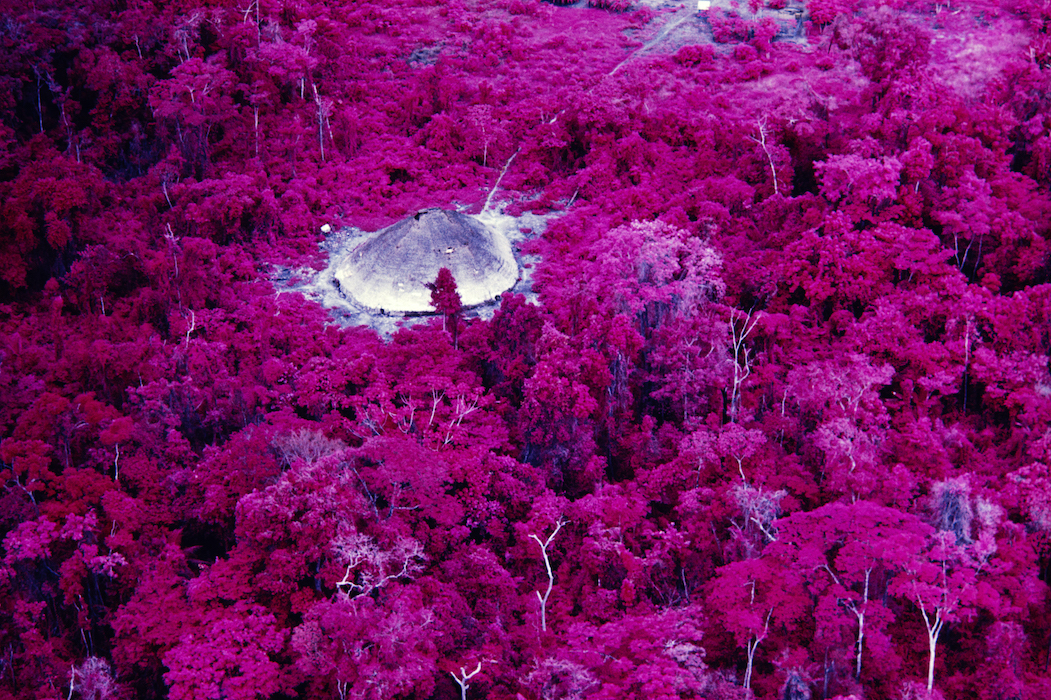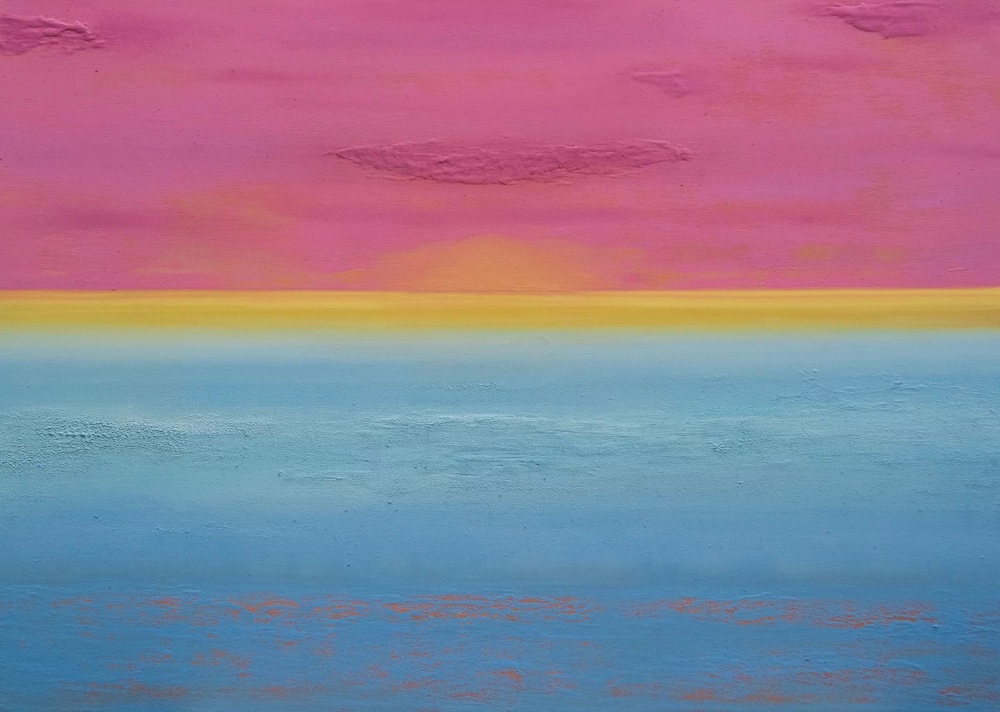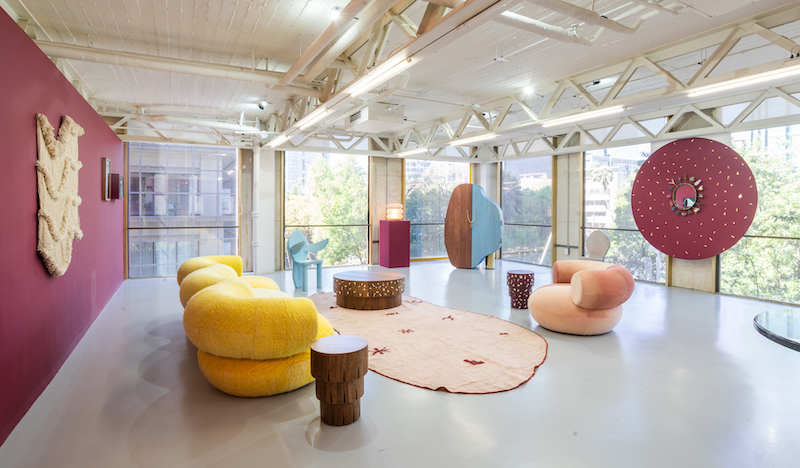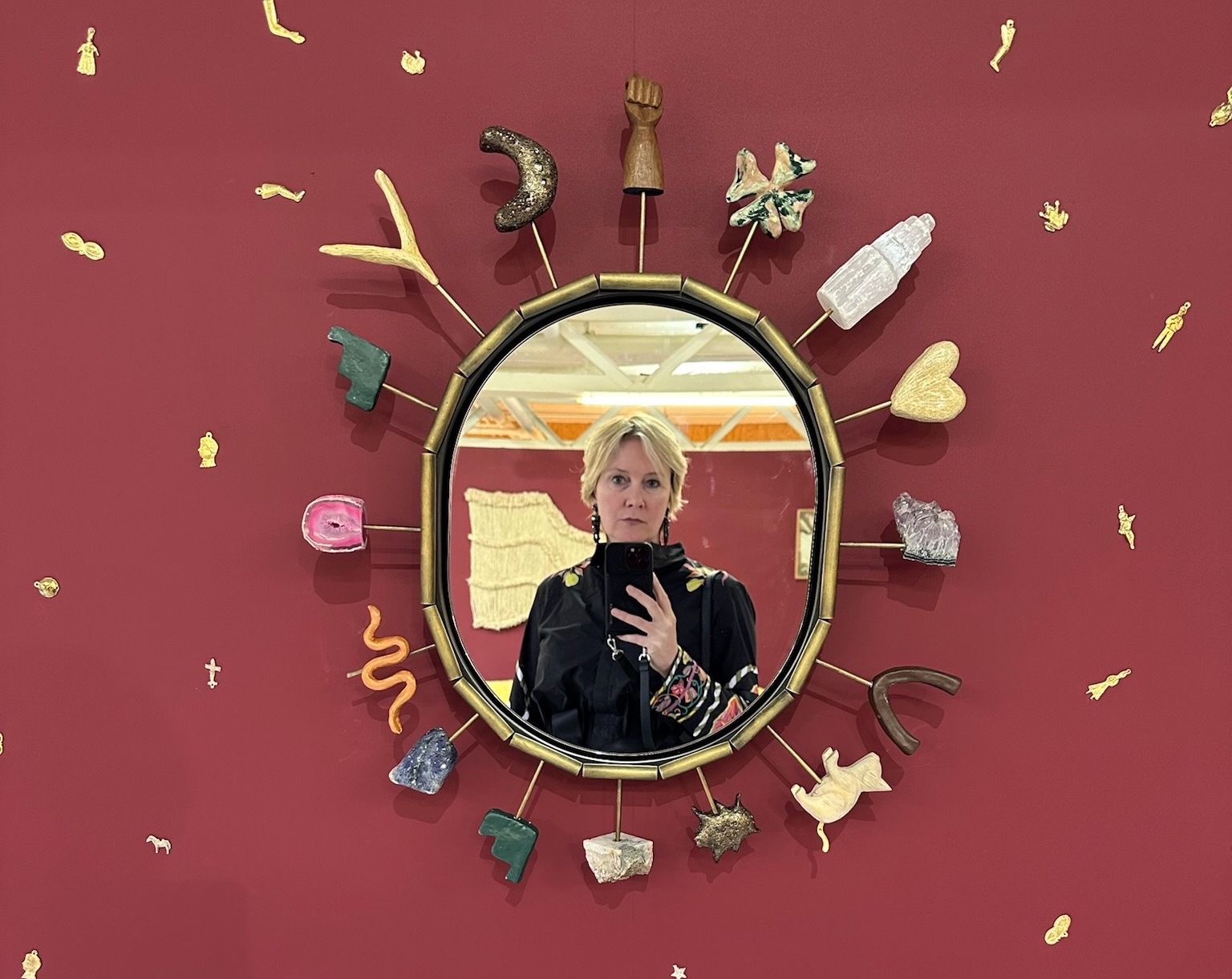“The Yanomami Struggle” exhibition is embedded with activism
Earlier this year, Whitewall attended a preview of “The Yanomami Struggle” (February 3–April 16, 2023) at The Shed in New York. It was presented by the Fondation Cartier pour l’art contemporain and the Instituto Moreira Salles, São Paulo, Brazil (IMS), in partnership with two Brazilian NGOs—Hutukara Associação Yanomami and Instituto Socioambiental. As a comprehensive exhibition dedicated to the Yanomami people, one of the largest Indigenous groups living in Amazonia today, it also highlighted their relationship with the artist and activist Claudia Andujar.
Following presentations at IMS in São Paulo, the Fondation Cartier in Paris, and the Barbican Centre in London, among other venues, the expansive show exhibited an unprecedented vision of Yanomami culture, society, and visual art through an array of mediums and storylines. Currently, it is on view in Mexico City at Museo Universitario de Arte Contemporaneo through October 15.
Curated by Thyago Nogueira, Head of Contemporary Photography at IMS and guided by the Yanomami shaman, spokesperson, and co-author of The Falling Sky, Davi Kopenawa, it featured over 80 drawings and paintings by Yanomami artists, including André Taniki, Ehuana Yaira, Joseca Mokahesi, Orlando Nakɨ uxima, Poraco Hɨko, Sheroanawe Hakihiiwe, and Vital Warasi.
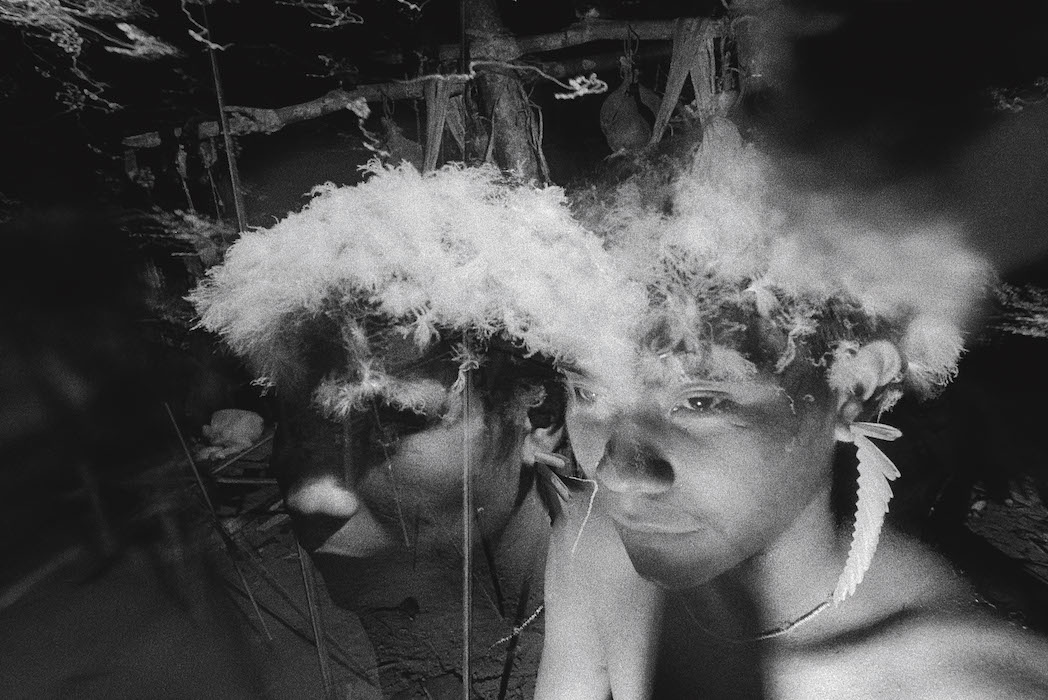
Claudia Andujar, A guest decorated with vulture and hawk down feathers at a feast, Catrimani region, 1974, © Claudia Andujar, collection of the artist, photo by Lewis Mirrett, courtesy of the Fondation Cartier pour l’art contemporain.
Among those works were more than 200 intimate photographs by Andujar that recount her interactions with the Yanomami people, which raise visibility for their struggle to protect their land, people, and culture. Videos by the contemporary Yanomami filmmakers Aida Harika, Edmar Tokorino, Morzaniel Ɨramari, and Roseane Yariana were also seen.
“I think the most important thing is the chance to introduce people to another aspect of our world. At the same time, this other aspect of our world allows us to recognize ourselves in other human beings who deserve to live their lives as they wish and according to their own understanding of the world,” said Andujar.
Nogueira shared with Whitewall how he approached curating a show of this cultural caliber, where it will be seen next, and how those who wish to support the Yanomami people can.
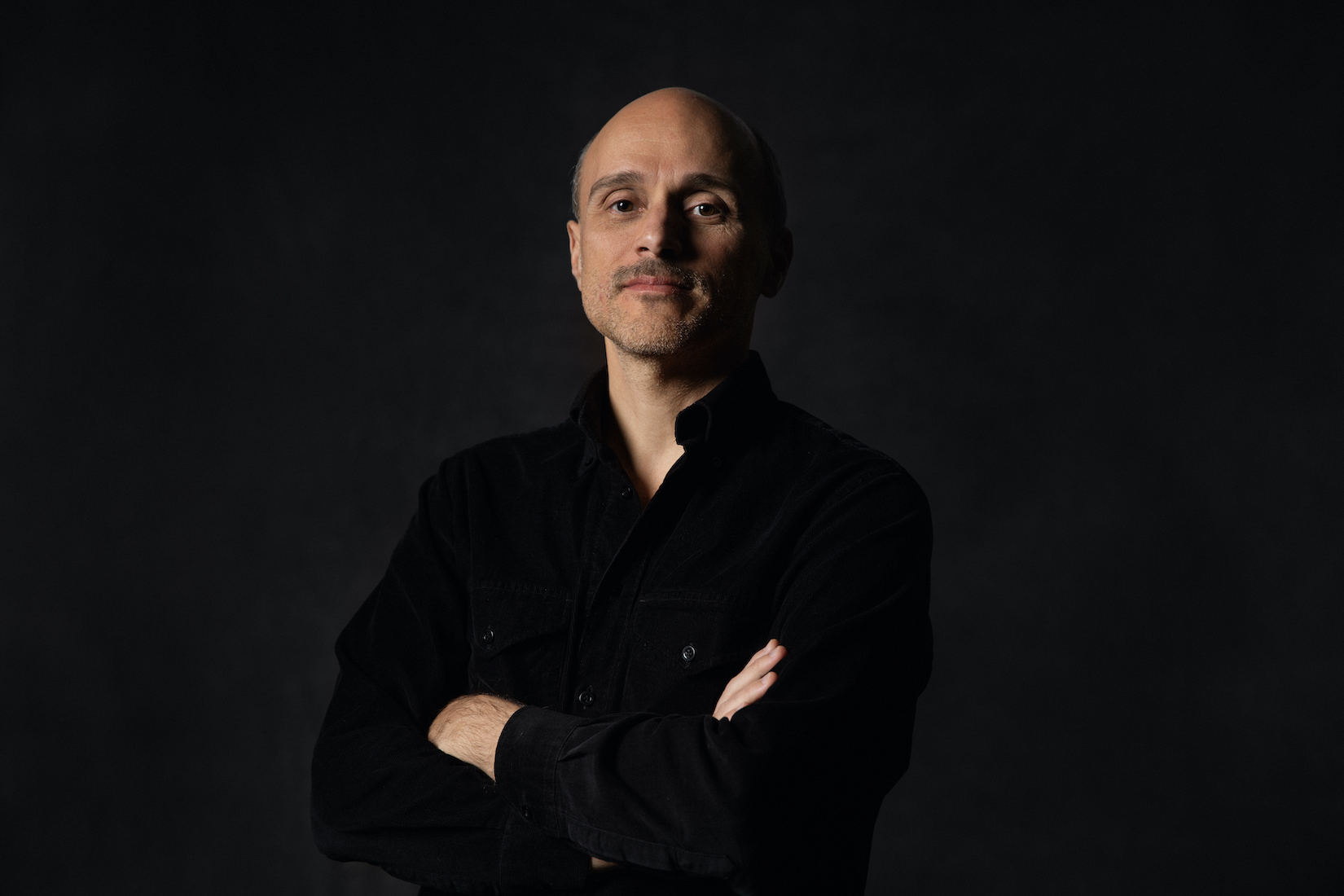
Thyago Nogueira, portrait by Lewis Mirrett, courtesy of the Fondation Cartier pour l’art contemporain.
WHITEWALL: What was your starting point for curating the original presentation of “The Yanomami Struggle” at IMS?
THYAGO NOGUEIRA: The show was planned as an homage to Claudia Andujar and Davi Kopenawa’s work and their collaborative battle for the demarcation of the Yanomami land and the sovereignty of the Yanomami people. It was planned for about two years and opened in Brazil right before Bolsonaro came into power. So, what was meant to be a celebration of a very successful fight and demarcation was overturned and became an important platform to keep reinforcing Indigenous rights as Bolsonaro threatened violence against all Indigenous peoples in Brazil.
So, it was originally conceived to understand Claudia’s trajectory, the ethical and aesthetical questions that are underlying in her work, and her relationship with the Yanomami people and with Davi. The show was also an opportunity to look at these images and this story with the understanding that we now have of Yanomami history and cosmology. This was the starting point. I really tried to understand her archive and reconnect its artistic and political dimensions to tell the story of a successful fight for human rights.
WW: How was the presentation at The Shed different from previous iterations at IMS and elsewhere?
TN: Each presentation has been very different. When we opened in Brazil, as I said, we didn’t have [Jair] Bolsonaro as president, so immediately this story that seemed very far removed from the period of dictatorship became so timely and so important. When we moved the exhibition to Rio, we changed many things. The exhibition’s European debut took place in France, and this was the first time we were confronted with questions related to Brazil’s colonial history in Europe, so we also had to change it.
Then, the pandemic struck 40 days after we opened in Paris. It was a new understanding of the importance of preserving nature and of taking care of people, of vaccination campaigns, and of health programs. Things that I think the Yanomami have understood very clearly for a long time, we were met within our own societies. So again, everything changed.
The more the exhibition traveled, the more I had to change the understanding of that history. We also had the Black Lives Matter movement. We had many different issues going in the world that connected to the exhibition. I had to respond and make sure people understood that this small story that took place in Brazil, in the Yanomami territory, in a way echoed and related to many different stories and movements around the world.
At the Shed, there was a big change because the exhibition returned to the Americas. It was important to connect the story of the Yanomami to the violence and struggles faced by Indigenous communities in North America and also incorporate the work of contemporary Yanomami artists. So this iteration was about how to present the new generation of artists producing work in the Yanomami territory as protagonists and placing their work in dialogue with Claudia’s in order to show that this is the same fight, just passing the baton to a different generation.
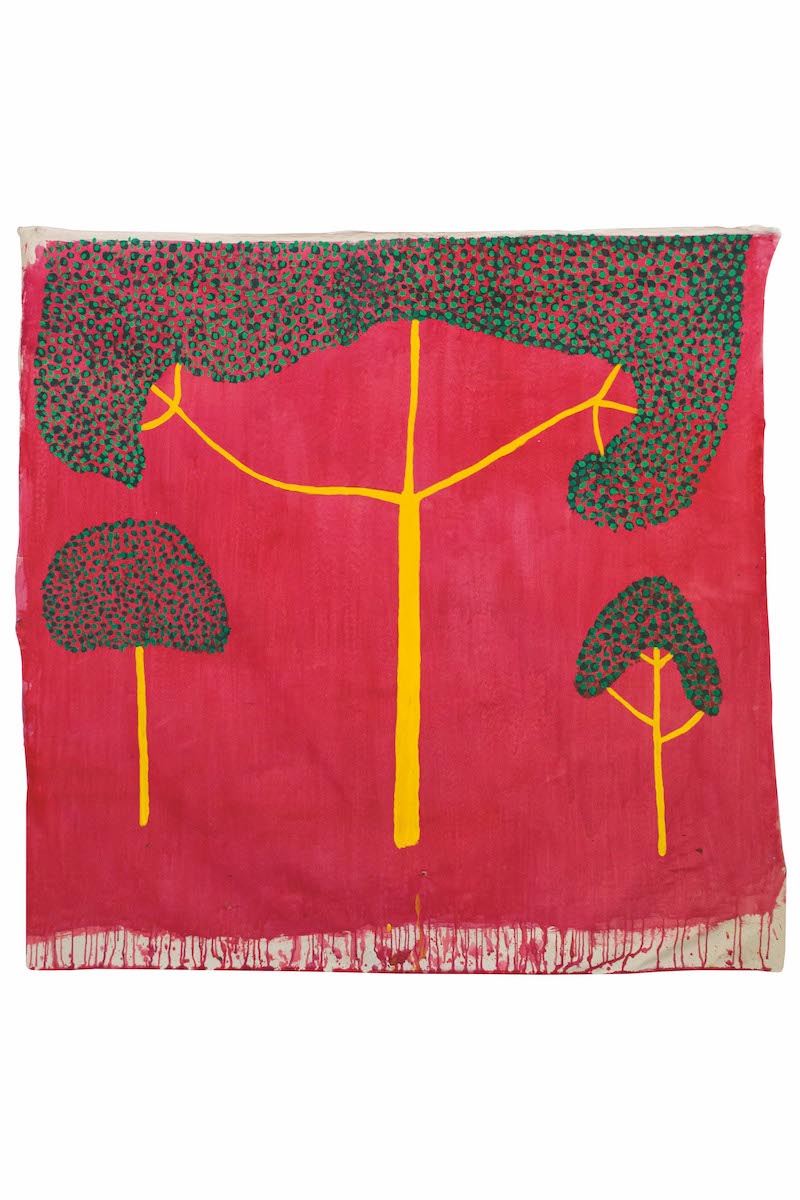
Sheroanawe Hakihiiwe, Hii Hi frare frare [Tree with yellow trunk], 2021, © Sheroanawe Hakihiiwe, collection of Fondation Cartier pour l’art contemporain, photo by Lewis Mirrett, courtesy of the Fondation Cartier pour l’art contemporain.
Art, archival works, and photographs of the Yanomami
WW: What do you feel is the value of an expanded presentation that includes more work made by Yanomami artists?
TN: It’s really the opportunity to connect those two different eras together and make a dialogue between the historical fight conducted by Davi and Claudia and the current one being conducted by a young generation of filmmakers and artists like Ehuana Yaira, Joseca Mokahesi, and Morzaniel Ɨramari. It was beautiful to see how their presence in New York together also helped to forge new bonds within them, the new generation of Yanomami artists and activists. Watching Davi invoke the political situation in Brazil, speaking to non-Indigenous people, I think the younger artists were admiring Davi but also learning from him about how to proceed with this battle.
WW: The Yanomami people are one of the largest Indigenous groups living in Amazonia today. What do you hope this presentation shares with the public about their culture, their struggles, or their future?
TN: I think we explained the Yanomami very well in the exhibition. They are a very diverse group that lives in the Amazonian rainforest of Venezuela and Brazil. There are about 20,000 Yanomami in Venezuela, 30,000 in Brazil. They speak five different languages. They are hunter-gatherers and semi-nomadic people, dispersed throughout nearly 400 communities.
I think people need to understand that the way our society is organized, what we do, how we consume, how we eat, and how we buy things is directly connected to what’s going on in Amazonia. You know, all the problems and the struggles they have now are connected to the aggressiveness of our own society, our own way of living. It’s really important that we reconnect these two spheres of living because one, which is strong and powerful, is destroying the other, and we are losing the opportunity to learn so many different cosmovisions, so many ways of inhabiting this planet that are more respectful, more integrated with nature, and have a lot of knowledge and technologies to teach us how to live more in harmony. I think people should start to understand those relationships.
WW: Why does presenting this show in partnership with an institution like Fondation Cartier make sense?
TN: The Fondation Cartier has been supporting the Yanomami people for almost 20 years now. They’ve invested a lot in developing the artists, helping them to build their careers and show their work internationally. They’ve also been very devoted supporters of Indigenous people—not only the Yanomami, but other Indigenous people in Brazil and worldwide. So, I think the exhibition is an important moment to reinforce this partnership and make sure that all these different cosmovisions and artistic productions not usually integrated into the mainstream market have a space and a say in the international arena.
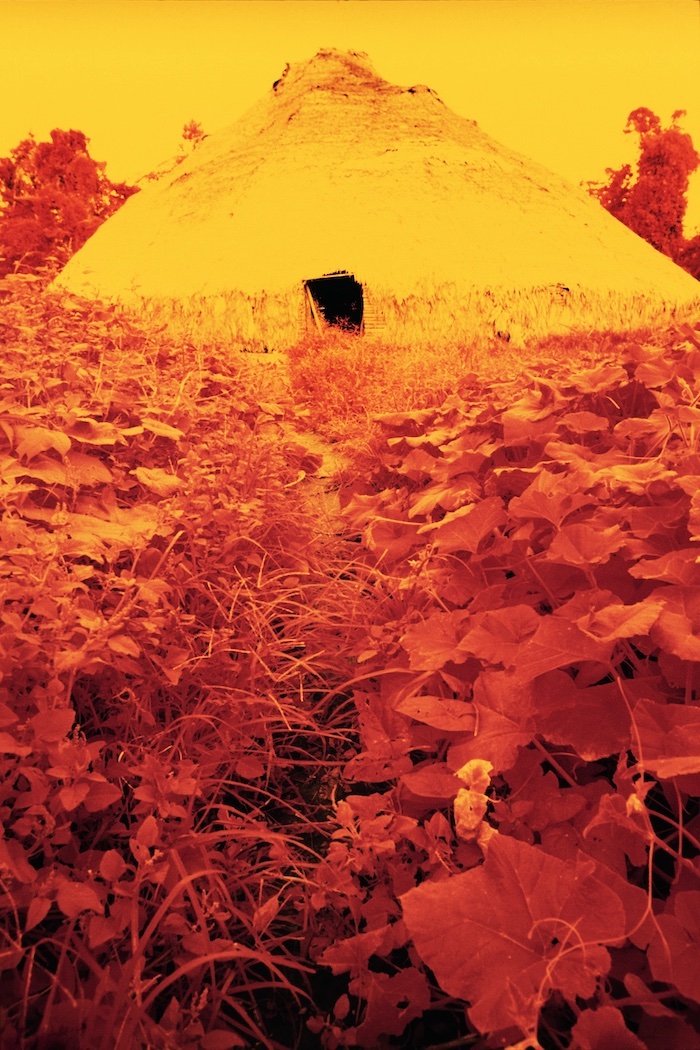
Claudia Andujar, Collective house surrounded by sweet- potato leaves, Catrimani region, 1975, © Claudia Andujar, collection of the artist, photo by Lewis Mirrett, courtesy of the Fondation Cartier pour l’art contemporain.
A bond formed on the history of the Yanomami and hope
WW: How would you describe the nature of the unique relationship between Claudia Andujar and the Yanomami people?
TN: I think it’s really one-of-a-kind. This is a woman who escaped the Holocaust, who saw her people being exterminated, and who had to leave her land because it was invaded. She went to Brazil, arrived in the Yanomami territory, met other people with whom she identified, saw a similar violent history being repeated, and decided to fight for her life against that, even abandoning her career in service of this cause. It’s really beautiful to see how much effort she put into this, how much she learned from the Yanomami, and how they’ve forged new bonds that are as strong as those shared by blood relatives. It’s also really beautiful to see now, after the demarcation and their story together, how the Yanomami call Claudia their mother and Claudia calls them her children. They really feel part of the same family, regardless of their origins, territory, or heritage.
WW: You’ve worked with this material for a while. What did you learn in the process of curating this exhibition that was surprising, and that you hope others take away from the show?
TN: There are clear dimensions to the show. One is the artistic dimension, which is my field and what led me to investigate Claudia’s archive. This investigation opened my eyes to Claudia’s greater artistic life, which I now understand as a series of profound ethical commitments. The archive is a record of how those commitments actually changed the world.
Studying these materials was an opportunity for me to see the power of photography, which lets you see things that you couldn’t see otherwise. But also, it has the potential to change the story of Brazil and the world and help save a cosmovision and a people from violent destruction and genocide.
The other half of this story is really the opportunity I have had to be in touch with the Yanomami and to learn from them a completely different understanding of the world, of nature, of social relations, of everything that I learned since childhood. I’ve never had such a radical opportunity to dislocate myself from my own perspective and really question everything that I thought were universal ideas or general concepts about the world. It’s really a radical shift in terms of your understanding, the way you formulate your knowledge, and the way you look at everything you’ve learned since you were a kid—from science to history.
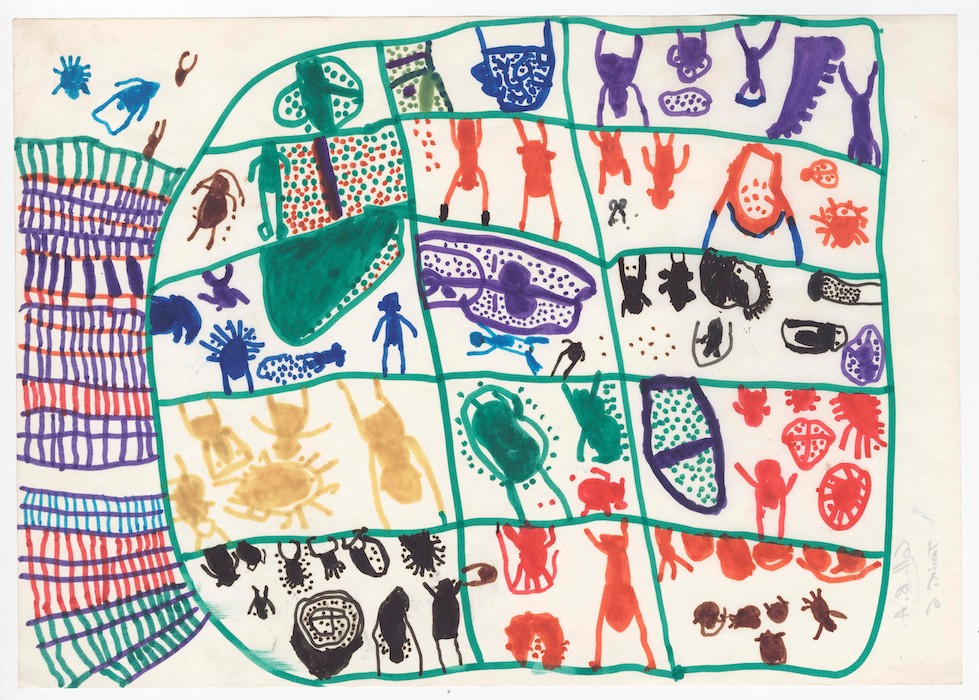
André Taniki, Visions from the world of the xapiri, with its houses, mirrors, and paths, 1978-1981, © André Taniki, photo by Lewis Mirrett, collection of Fondation Cartier pour l’art contemporain, courtesy of the Fondation Cartier pour l’art contemporain.
WW: The show was coordinated with the guidance and help of the shaman and Yanomami leader, Davi Kopenawa. What was it like working with him to execute this show?
TN: It was an absolutely extraordinary opportunity to work with Davi Kopenawa. Every time I meet him, every time I talk to him, it’s really fascinating. He’s a shaman, so an important, great leader. Everything he says is so precise, so simple, and so clear. Working with Davi has taught me how to deal with the material and images sensitive to the Yanomami people in an ethical way. Davi has also taught me how to dislocate myself from my perspective and my self-understanding and really create a new perspective of the world and a new understanding of my position in this world.
Supporting the Yanomami Struggle
WW: Of the show, you said, “At a time when Amazonia is threatened once again by unbridled development, deforestation, and illegal mining, this exhibition presents a multi-layered narrative of violence and resistance. It also uses art as a platform to amplify the Yanomami voices and expose our responsibilities in the humanitarian and environmental crisis threatening Indigenous societies worldwide.” How can the general public help diminish the threats they face?
TN: I think the first thing that people need to do in order to help is to learn. They really need to understand the Yanomami. If they cannot travel or if they cannot be closer to the Yanomami people, I think the exhibition is a good entry opportunity. They can read, they can really learn about all these different perspectives—especially the widely varied Indigenous perspectives that coinhabit this world with us—and understand their views, values, and ethical positions.
The public will find ways to help. I don’t feel it’s up to me or to anyone to say how to help, but I think we can all self-reflect on how our lifestyle directly influences what’s going on with the Yanomami and how we can change the way we live in order to protect them. But the first step is to learn, to get closer, to really be open to listening.
WW: The show is also in partnership with two Brazilian NGOs—Hutukara Associação Yanomami and Instituto Socioambiental. How does this exhibition serve as a form of activism?
TN: This is a very important issue because the exhibition is one thing. It really tells this complex story of the relationship between art and activism and the role of art production in this quest to represent the invisible. On the other hand, there have been very direct political actions taken to protect the Yanomami.
Presenting this exhibition is also an opportunity to build a network that is, in a way, connected to the exhibition, but exists regardless of the images. This network can provide new opportunities for the Yanomami and Indigenous protections in Brazil and abroad.
Bringing the Yanomami to New York, connecting them with the Lenape, bringing the Lenape to the Shed, bringing the UN Secretary General to see the exhibition—he spent an hour and a half listening to the Yanomami—bringing the UN Permanent Forum on Indigenous Issues to the exhibition, young students, all these demographics, is a very important dimension of the exhibition and maybe even the most important dimension. To think – how we can use this exhibition as an opportunity to move the pieces on this chessboard and strengthen these connections.
WW: For those that want to help the Yanomami people, how can they?
TN: If people really want to help the Yanomami, they can access Hutukara Associação Yanomami’s Instagram page. There’s a direct donation QR code where you can donate. I think they have it in English and Portuguese. But I remember that this question was asked by someone in one of the talks, and Txai Suruí, one of the Brazilian Indigenous leaders from the Suruí people, said “You can look at your own territory and see what’s going on with Indigenous populations in your territory. What’s been done to them? How’s their relationship to the land? Where is their land? Is there respect for their beliefs and their way of living?”
I think if we create bonds and reinforce Indigenous communities in each country, we will certainly be enforcing respect for the Yanomami also.
WW: When the show in New York closed, did you have any particular reflections on this presentation? Were there challenges in hanging this show in the United States?
TN: I think the biggest challenge is to make people understand that the way they live in New York is directly connected to the way the Yanomami can live on their land. The Yanomami are on the frontier of capitalistic societies, and they are facing the destruction of the forest because of the way we choose to live in cities. I think the biggest challenge for me was making this connection very clear and showing that we’re inhabiting and interfering with the same world, that this is not a story about a removed, far away, isolated people. It’s about us.
“The Yanomami Struggle” on tour
WW: Where will the exhibition travel next? Will it change?
TN: It’s going to the University Museum in Mexico City; then to Museo Amparo in Puebla, Mexico; then to Museo de Arte del Banco de la República in Bogota, Colombia; and then to Centro Cultural La Moneda in Santiago, Chile. It’s really an extraordinary tour. I think we’ve never, at IMS where I work, done such a big tour of a show. It’s going to be 12 stops. It’s mostly because the exhibition—even if it took place in the 70s, 80s, and 90s—is really connected to what’s happening today and the discussions we’re having today in the world.
I really hope when it moves to Latin America that the exhibition is enhanced in its connection to the local Indigenous conversations. Mexico, Colombia, and Chile are countries with very strong Indigenous populations and very strong debates on land acknowledgments and Indigenous sovereignty. I really hope this will resonate in the exhibition and that we can make the connection between the Yanomami and the local Indigenous people in these different countries.
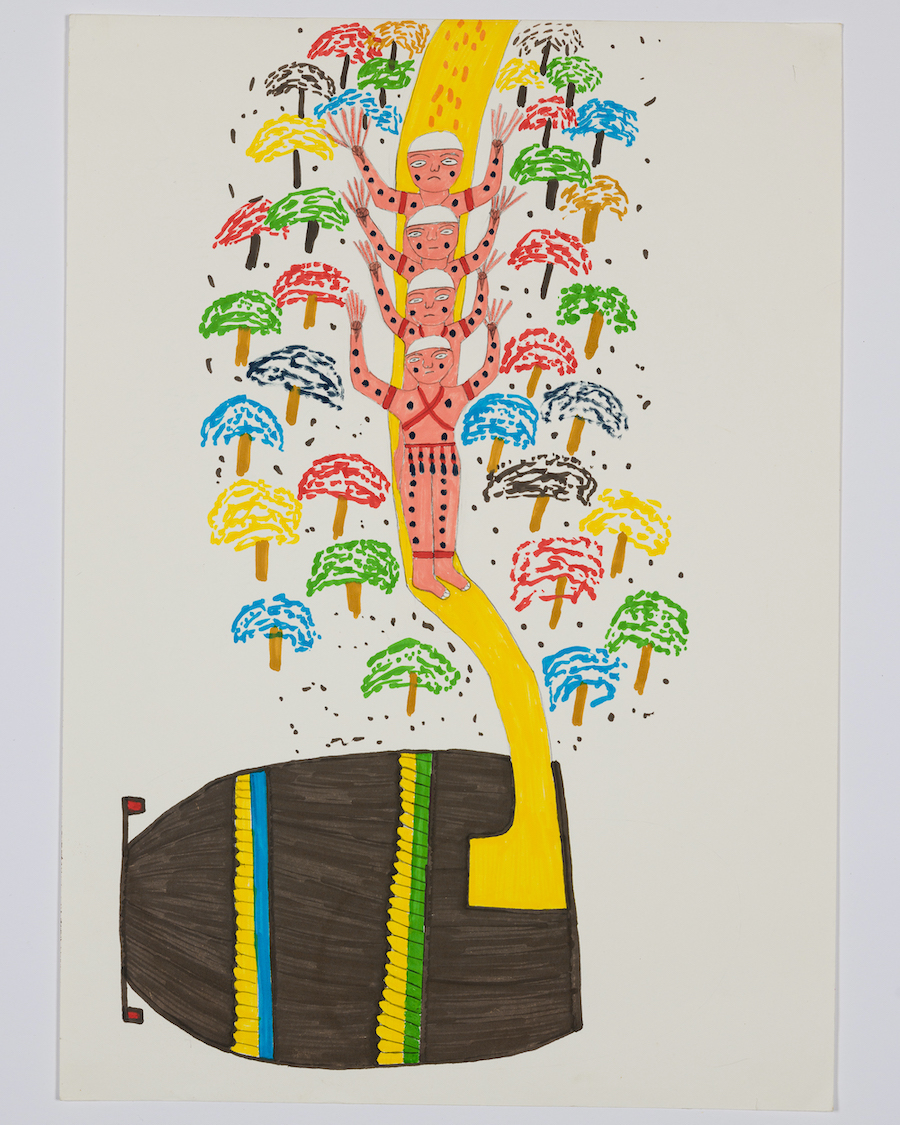
Joseca Mokahesi, Such are the paths of the xapiri when they descend into the house of the shamans, 2003, © Joseca Mokahesi, collection of Bruce Albert, photo by Lewis Mirrett, courtesy of the Fondation Cartier pour l’art contemporain.
WW: As you mentioned, you work as the Head of Contemporary Photography at Instituto Moreira Salles, São Paulo, Brazil. What are you working on there this year?
TN: I opened a contemporary exhibition of 20 contemporary Brazilian artists on April 1. It’s a young generation that we’ve supported over the past ten years that is producing work – beautiful, very strong work—very political, very related to social issues.
I’m working on a Daidō Moriyama retrospective—a huge presentation of one of the most important Japanese photographers worldwide. I presented it in São Paulo and now I’m in Berlin because it will travel to Berlin, London, Switzerland, Finland, and Austria.
I’m also working on the retrospective of a very important Brazilian filmmaker called Jorge Bodanzky, who also worked in the Amazonia region.
I’m preparing other things in the future, but I’m also taking care of our photography magazine, grant, and collection.
WW: IMS is an institution that takes care of the archives and estates of Brazilian photographers. Of its work, you said, “I think it’s part of the institution’s mission to understand the meaning of an archive and how we can update this meaning.” How can you? How did this show?
TN: We look at an archive as a historical object, but it’s an object that is influencing the present. Claudia’s show was an investigation of that. For me, it was how it first brought together the political dimensions that define this archive, but also how we can show that this archive is absolutely connected to the issues of the present and still very alive and very contemporary. I think this is part of our mission as an archival museum institution.



